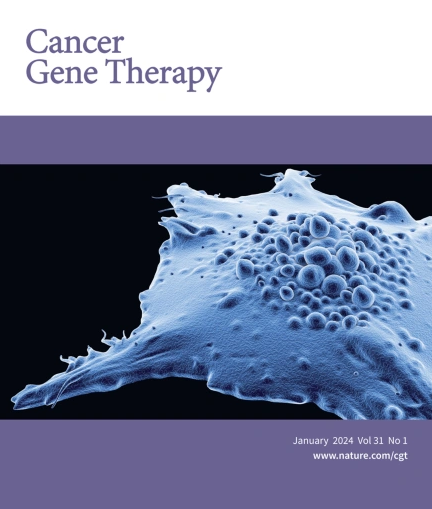RUNX1A isoform is overexpressed in acute myeloid leukemia and is associated with FLT3 internal tandem duplications
IF 5
3区 医学
Q1 BIOTECHNOLOGY & APPLIED MICROBIOLOGY
引用次数: 0
Abstract
RUNX1A is the shortest and least expressed of the RUNX1 three main isoforms (A, B, C); despite this, the leukemogenic role of its overexpression has been clearly described. Several studies have shown RUNX1A involvement in different blood cancers and pilot observations in acute leukemia have been reported. In this context, we evaluated RUNX1 isoforms expression in a cohort of acute myeloid leukemia (AML) patients, finding overexpression of RUNX1A and RUNX1B, with higher median levels in thrombocytopenic cases. No difference was observed for RUNX1C. RUNX1A overexpression is higher in more immature AML phenotypes. According to the mutational profile, FLT3 internal tandem duplication (ITD) positive cases have the highest RUNX1A levels and the presence of FLT3-ITD was the only molecular variable able to influence RUNX1A expression. RUNX1A overexpression is disease-related, associated with a specific transcriptional profile, and reappears at relapse, with no clear kinetics except in FLT3-ITD cases. Overall, we demonstrate RUNX1A overexpression in AML and its association with the FLT3-ITD molecular subtype. Our data shed light on the dark side of RUNX1 deregulation, paving the way for further investigations.

RUNX1A亚型在急性髓性白血病中过表达,并与FLT3内部串联重复相关。
RUNX1A是RUNX1三个主要亚型(A、B、C)中最短且表达量最少的;尽管如此,其过表达的白血病发生作用已被清楚地描述。一些研究表明RUNX1A参与不同的血癌和急性白血病的初步观察。在此背景下,我们评估了RUNX1亚型在急性髓性白血病(AML)患者队列中的表达,发现RUNX1A和RUNX1B过表达,在血小板减少病例中具有较高的中位水平。RUNX1C无差异。RUNX1A过表达在更不成熟的AML表型中更高。根据突变谱,FLT3内部串联重复(ITD)阳性病例的RUNX1A水平最高,FLT3-ITD的存在是唯一能够影响RUNX1A表达的分子变量。RUNX1A过表达与疾病相关,与特定的转录谱相关,并且在复发时再次出现,除了FLT3-ITD病例外,没有明确的动力学。总之,我们证实了RUNX1A在AML中的过表达及其与FLT3-ITD分子亚型的关联。我们的数据揭示了RUNX1放松管制的阴暗面,为进一步调查铺平了道路。
本文章由计算机程序翻译,如有差异,请以英文原文为准。
求助全文
约1分钟内获得全文
求助全文
来源期刊

Cancer gene therapy
医学-生物工程与应用微生物
CiteScore
10.20
自引率
0.00%
发文量
150
审稿时长
4-8 weeks
期刊介绍:
Cancer Gene Therapy is the essential gene and cellular therapy resource for cancer researchers and clinicians, keeping readers up to date with the latest developments in gene and cellular therapies for cancer. The journal publishes original laboratory and clinical research papers, case reports and review articles. Publication topics include RNAi approaches, drug resistance, hematopoietic progenitor cell gene transfer, cancer stem cells, cellular therapies, homologous recombination, ribozyme technology, antisense technology, tumor immunotherapy and tumor suppressors, translational research, cancer therapy, gene delivery systems (viral and non-viral), anti-gene therapy (antisense, siRNA & ribozymes), apoptosis; mechanisms and therapies, vaccine development, immunology and immunotherapy, DNA synthesis and repair.
Cancer Gene Therapy publishes the results of laboratory investigations, preclinical studies, and clinical trials in the field of gene transfer/gene therapy and cellular therapies as applied to cancer research. Types of articles published include original research articles; case reports; brief communications; review articles in the main fields of drug resistance/sensitivity, gene therapy, cellular therapy, tumor suppressor and anti-oncogene therapy, cytokine/tumor immunotherapy, etc.; industry perspectives; and letters to the editor.
 求助内容:
求助内容: 应助结果提醒方式:
应助结果提醒方式:


